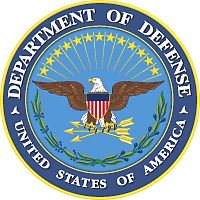
References & Appendices


Introduction
&
Problem Statement
Air Force Instruction (AFI) 35-101. (2001). Public Affairs policy and procedures.
Ashmos, D. P. & Huber, G. P. (1987). The systems paradigm in organization theory: Correcting the record and suggesting the future, 12(4), pp. 607-608.
Bernays, E. L. (1955). The theory and practice of public relations: A resume. In E. L. Bernays (Ed.), The engineering of consent (pp. 3-25). Norman, OK: University of Oklahoma Press.
Brightman, H. J. (1980). Problem solving: A logical and creative approach. BusinessPublishing Division, Georgia State University, Atlanta, GA.
Botan, C. H., & Hazleton, V. Jr (1989). The role of theory in public relations. In C. H. Botan & V. Hazelton (Eds.), Public relations theory (pp. 3-16). Hillsdale, NJ: Lawrence Earlbaum, Assoc.
Cutlip, S. M., Center, A. H., & Broom, G. M. (1985). Effective public relations, (6th Ed.). Englewood Cliffs, NJ: Prentice-Hall.
Cutlip, S. M., Center, A. H., & Broom, G. M. (1994). Effective public relations (7th Ed.). Englewood Cliffs, NJ: Prentice-Hall.
Cummings, H. W., Long, L. W., & Lewis, M. L. (1987). Managing communication in Organizations: An introduction, 2nd Ed. Gorsuch Scarisbrick, Scottsdale, AZ.
Farace, R., Monge, P., & Russell, H. (1977). Communicating and organizing. Reading, Mass: Addison-Wesley
Field Manual (FM) 3-61.1. (2001). Public Affairs planning, Chapter 3.
Ginsburg, A. R. (1955). The tactics of public relations. In E. L. Bernays (Ed.), The engineering of consent (pp. 214-236). Norman, OK: University of Oklahoma Press.
Grunig, J. E. (1989). Symmetrical presuppositions as a framework for public relations theory. In C. H. Botan & V. Hazelton (Eds.), Public relations theory (pp. 17-44). Hillsdale, NJ: Lawrence Earlbaum, Assoc.
Heath, R. L. & Bryant, J. (2000). Human communication theory and research, 2nd Ed. Lawrence Erlbaum Associates, Publishers, Mahwah, NJ
Huse, E. & Bowditch, J. (1973). Behavior in organizations. Reading, Mass.: Addison-Wesley
Infante, D. A, Rancer, A. S., & Womack, D. F. (1997). Building communication theory, 3rd Ed. Waveland Press, Inc.
Jayaram, J., Ahire, S., (1998), Impact of Operations Management Practices on Quality and Time- Based Performance, International Journal of Quality & Reliability Management (15), No. 2, p. 192-204.
Johnson, B. M. (1977). Communication: the process of organizing. Allyn and Bacon, Inc.
Joint Pub 3-61. (1997). Doctrine for Public Affairs in joint operations.
Katz, E., & Lazarsfeld, P. F. (1955). Personal influence: the part played by people in the flow of mass communication. New York: Free Press
Katz, D., & Kahn, R. (1966). The social psychology of organizations. New York: John Wiley & Sons, Inc.
Keyton, J. (2001). Communication research: asking questions, finding answers. Mountain View, CA: Mayfield.
Koehler, J. W., Anatol,
K. W. E., & Applbaum, R.L. (1976). Organizational
Communication: Behavioral perspectives. Holt, Rinehart and Winston.
Kreps, G. (1990). Organizational communication: Theory and practice. New York: Longman.
Leeper, R. V., & Leeper, K. A. (2001). Public Relations as practice: Applying the theory of Alasdair McIntyre. Public Relations Review, 27(3), 461-473.
Mayring, P. (2000, June). Qualitative content analysis. Retrieved December 2, 01, from Forum Qualitative Sozialforschung/Forum: Qualitative Social Research [On-line Journal] Web Site: http://qualitative-research.net/fqs/fqs-e/2-00inhalt-e.htm
Marine Corps Warfighting Publication (MCWP) 3-33.3. (2000). Marine Corps Public Affairs.
Mortensen, C. D., (1972). Communication: The study of human interaction. McGraw-Hill Book Company.
Neff, B. D. (1989). The emerging theoretical perspectives in PR: An opportunity for communications departments. In C. H. Botan & V. Hazelton (Eds.), Public relations theory (pp. 159-172). Hillsdale, NJ: Lawrence Earlbaum, Assoc.
Pfau, M., & Wan, H. (2001). Persuasion: An intrinsic function of Public Relations. In C. H. Heath, R. L., & Bryant, J. (2000). Human communication theory and research (2nd Ed.). Mahwah, NJ: Lawrence Erlbaum Associates. Botan & V. Hazelton, (Eds.), Public Relations Theory II (p. ). In press.
Proehl, R., (1997), Enhancing the Effectiveness of Cross-Functional Teams, Team Performance Management (3), No. 3, p. 137-149.
Public Relations Society of America. (n.d.). Retrieved December 10, 2001, from http://tampa.prsa.org/pr101.html.
Putnam, L., & Sorenson, R. (1982). Equivocal messages in organizations. Human Communication Research 8, 114-132
Secretary of the Navy Instruction (SECNAVINST) 5720.44A. (1987). Public Affairs.
Shipley, D., (1994), Achieving Cross-Functional Coordination for Marketing Implementation, Management Decision (32), No. 8, p 17-20.
Shockley-Zalabak (1999). Fundamentals of organizational communication: knowledge, sensitivity, skills, values, 4th Ed. New York: Longman
Sommer, B., & Sommer, R. (1997). A practical guide to behavioral research: Tools and techniques (4th ed.). New York: Oxford University.
Spicer, C. (1997). Organizational arrogance and PR function. Organizational Public Relations. Hillsdale, NJ: Lawrence Earlbaum, Assoc.
Tjosvold, D., (1991), Team Organization: An Enduring Competitive Advantage, New York: John Wiley & Sons Inc.
Wellins, R., Byham, W., Dixon, G, (1994), Inside Teams: How 20 World Class Organizations Are Winning Through Teamwork, San Francisco, CA: Jossey-Bass Inc. Publishers.